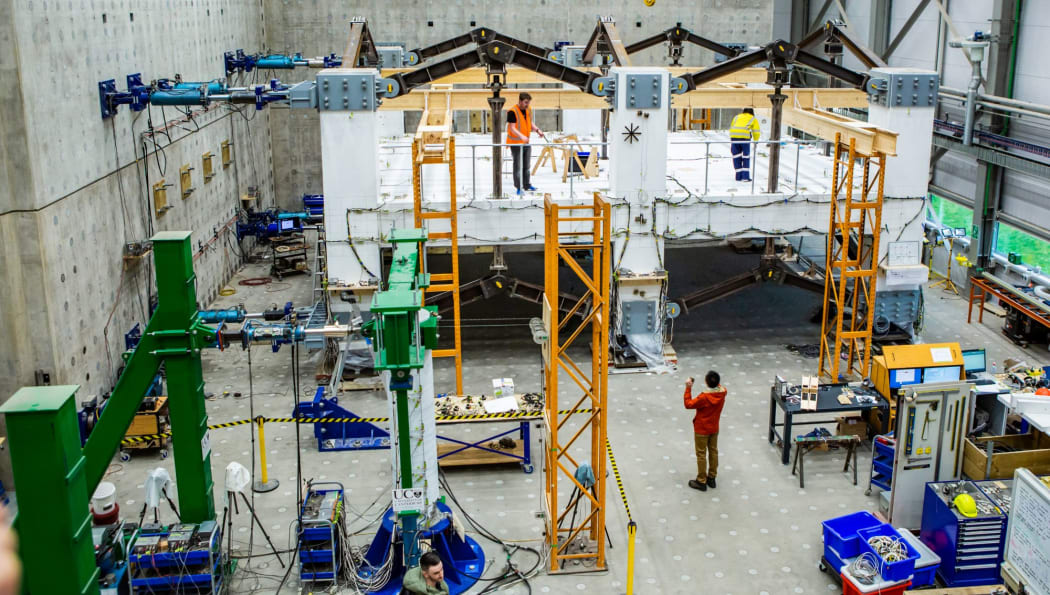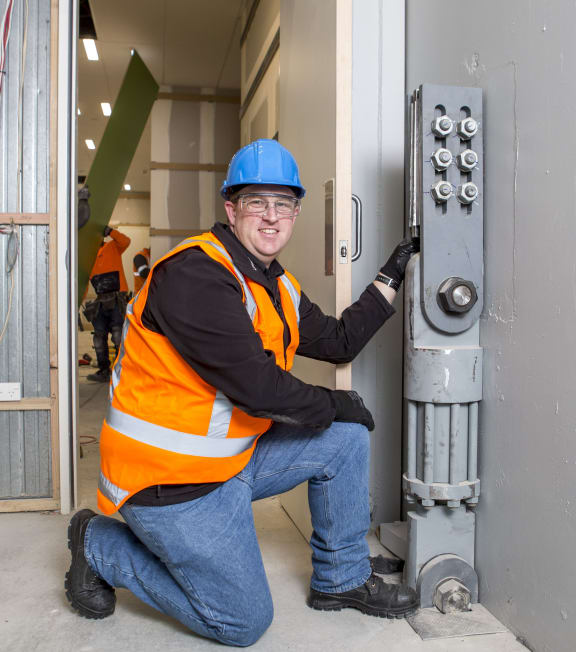Low-damage buildings don't just save lives in an earthquake - they are designed to be resilient so they can stay in use.

A large scale lab test of various structural components engineered for safer buildings takes place at the University of Canterbury. Photo: University of Canterbury
Find Our Changing World on Apple Podcasts, Spotify, Stitcher, iHeartRADIO, Google Podcasts, RadioPublic or wherever you listen to your podcasts

Geoff Rodgers with a seismic damper used in the new Christchurch library, Tūranga. Photo: University of Canterbury
Geoff Rodgers is an earthquake engineer with the University of Canterbury and QuakeCoRE. He is working to create low-damage buildings that will not only save lives in an earthquake but remain functional.
He talks with Alison Ballance about various ways to build low-damage buildings and about using a giant shake table in China to subject a full-size building to the kind of shaking experienced in real-life earthquakes.
Example of a low damage building
Christchurch’s new library Tūranga includes extrusion dampers. Geoff says that these are strategically bolted between key base walls and the foundation to act as motion restraints in the event of a large earthquake.
Each seismic damper is a metre long and weighs 185 kilograms.
"Under a low level of shaking, this building will respond just like a fixed base structure. Once you get beyond that low level of shaking, it has been designed to roll and move at the base but in a controlled way," he says.
Lessons from a shaky decade
A decade of earthquakes - Darfield. Christchurch. Cook Strait. Kaikōura. In the past decade, New Zealand has experienced four major earthquakes. Three GNS Science seismologists recollect their experience of the Big Ones and talk about the lessons we have learned from these ten shaky years.
Preparing for the next big quake - University of Canterbury earthquake engineer Brendon Bradley says we can’t predict when and where earthquakes will occur, but “we do have probabilistic models that tell us the likelihood that certain faults are going to rupture over a certain period of time.”
Designing low damage buildings - Low-damage buildings don't just save lives in an earthquake, says Geoff Rodgers - they are designed to be resilient so they can stay in use.
What we do during an earthquake and why it matters – David Johnston says say that when it comes to earthquakes, sometimes doing nothing is a safer option than taking the wrong action.


